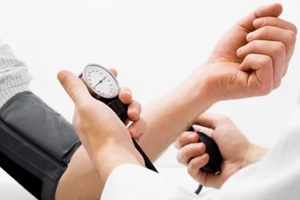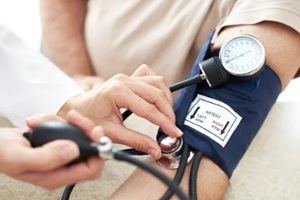 Pulmonary hypertension is a progressive disease characterized by increased pressure in the pulmonary arteries. This elevated pressure strains the right side of the heart as it pumps against greater resistance, trying to supply the lungs with blood. As pulmonary hypertension advances, accomplishing everyday tasks becomes more challenging.
Pulmonary hypertension is a progressive disease characterized by increased pressure in the pulmonary arteries. This elevated pressure strains the right side of the heart as it pumps against greater resistance, trying to supply the lungs with blood. As pulmonary hypertension advances, accomplishing everyday tasks becomes more challenging.
Learning to balance activity with rest periods, asking for assistance when needed, and slowly incorporating low-impact exercise can help manage debilitating symptoms.
Conserving Your Energy
Fatigue and shortness of breath frequently accompany a pulmonary hypertension diagnosis. Setting reasonable priorities, breaking up tiring tasks into smaller segments, and streamlining household chores whenever possible can help conserve energy.
Prioritize Your Daily To-Do List
Start each morning by creating a task list and then rank the items in order of importance. Distinguish absolute needs from discretionary wants. Delegate or eliminate tasks from the bottom of the list if possible. For example, housework can wait if your body needs rest.
Schedule Mandatory Breaks
Instead of pushing from start to finish in a single session, work slowly in short, manageable intervals no longer than 15-30 minutes. Program mandatory seated rest periods between tasks to allow your body to recoup strength before resuming activity.
Organize Your Home for Energy Efficiency
Take some time to observe how you move through your most-used rooms, then modify the space to minimize unnecessary bending, lifting, or climbing that could tax your cardiovascular system. Store frequently used kitchen tools and bathroom items within easy reach. Install adaptive equipment such as grab bars, shower benches, elevated toilet seats, and hands-free sink faucets.
Ask Others for Help
One of the most important things you can do is relinquish the self-imposed pressure to accomplish everything solo. Making meals, cleaning, laundry, and yard work often top the list of tasks that friends and family happily volunteer to help with. Accept offers of help without shame or guilt.
Beyond personal assistance, leverage online shopping to order pantry staples, household goods, and medications for delivery whenever possible. This avoids carrying heavy bags around stores and navigating large retail spaces on foot. Additionally, many pharmacies offer free home delivery for prescriptions, which can also be helpful.
Embrace Mobility Aids as Needed
Wheelchairs, knee scooters, rollators, and portable oxygen devices make leaving the house more feasible and conserve precious personal energy reserves for enjoying activities instead of just getting from one place to another.
Incorporating Appropriate Exercise
 While stringent bed rest was once the standard protocol, recent research confirms that remaining mildly active when tolerated provides significant quality-of-life benefits for patients with pulmonary hypertension, both physically and emotionally. As long as you carefully avoid overexertion, gentle exercise may help strengthen muscles, improve cardiovascular health within safe parameters, and boost overall mental well-being.
While stringent bed rest was once the standard protocol, recent research confirms that remaining mildly active when tolerated provides significant quality-of-life benefits for patients with pulmonary hypertension, both physically and emotionally. As long as you carefully avoid overexertion, gentle exercise may help strengthen muscles, improve cardiovascular health within safe parameters, and boost overall mental well-being.
Consult Your Healthcare Team First
It’s essential to discuss safe exercise guidelines customized to your individual case early in the diagnostic process, as overly strenuous physical activity can worsen pulmonary hypertension symptoms.
Request referral to a specialized pulmonary rehabilitation program for exercise training under the watchful guidance of therapists familiar with pulmonary hypertension patients. They can recommend target heart rate limits, supplemental oxygen needs, and warning signs indicating that you should stop the activity immediately.
Focus on Low-Impact Cardio
Water walking, recumbent cycling, and mild yoga keep the body moving without taxing the cardiopulmonary system as much as higher-impact aerobic options. Investing in an upright stationary bike for home use allows you to exercise while staying close to oxygen supplies.
Monitor Your Breathing and Vital Signs
Purposeful inhaling through the nose and prolonged exhales through the mouth promote air exchange efficiency. If your pulmonary hypertension medical team recommends supplemental oxygen while exercising, utilize it for maximum safety.
Keep a portable pulse oximeter handy to check your blood oxygen saturation levels periodically. Symptoms such as lightheadedness, chest pain, and pronounced shortness of breath signal it’s time to halt activity immediately.
Strength Train with Caution
Increase upper body muscular strength slowly with small, measured bicep curls or arm raises, either standing or sitting, using one- to five-pound free weights. Be cautious not to hold your breath during exertion, which can compromise oxygenation.
Staying Socially Connected and Managing Daily Life
 Living well with pulmonary hypertension extends beyond exercise and energy management to include maintaining relationships and handling practical daily concerns.
Living well with pulmonary hypertension extends beyond exercise and energy management to include maintaining relationships and handling practical daily concerns.
Socialize Virtually When Needed
When the thought of leaving the house seems too physically difficult, use technology to stay socially connected. Video calls, social media outreach, and live-streamed arts events allow you to enjoy shared interests without commuting anywhere.
Pace Social Activities
If you join in-person gatherings in moderation, reserve your stamina by pacing activities appropriately. Take frequent sitting breaks, use mobility equipment without embarrassment, and politely leave early if fatigue sets in before the party’s over.
Consume Well-Timed, Nutrient-Dense Meals
Small, frequent meals centered on anti-inflammatory whole foods prevent cardiovascular strain that comes from overeating. Snack on magnesium-rich edamame, spinach, and pumpkin seeds, which may boost pulmonary artery health. Stay hydrated and limit dietary sodium, caffeine, and alcohol, which can worsen symptoms.
Find Stress Relief Strategies
Yoga, mindfulness apps, journaling, and music therapy soothe anxiety, which can constrict blood vessels. Laughter and focusing on gratitude are other natural mood boosters. Consider saying no to nonessential responsibilities that raise your stress levels.
Communicate Openly
Educate friends and family about your type of pulmonary hypertension using relatable analogies and patient-friendly language. Share your experience so loved ones understand the unpredictability of pulmonary hypertension, explaining that you may have symptom-free good days followed by bad days where even simple tasks feel impossible.
Listen to Your Body
Perhaps most important of all, remain flexible in your plans. Skip optional activities without guilt if your body unambiguously tells you it urgently needs rest. Pulmonary hypertension may be a lifelong condition, so intelligently pacing yourself is essential.
Turn to Imperial Center Family Medicine for Pulmonary Hypertension Support
 The daily balancing act required to manage life with pulmonary arterial hypertension presents steep and often unpredictable hurdles. Imperial Center Family Medicine‘s compassionate pulmonary hypertension specialists understand the multifaceted nature of this misunderstood disease.
The daily balancing act required to manage life with pulmonary arterial hypertension presents steep and often unpredictable hurdles. Imperial Center Family Medicine‘s compassionate pulmonary hypertension specialists understand the multifaceted nature of this misunderstood disease.
We create fully customized treatment plans designed to help our patients live active, hopeful lives on their own terms. Contact us today at 919-873-4437 or online to discuss evidence-based therapy options or schedule an appointment to meet our compassionate care team.
